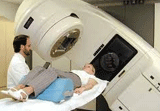Cancer Radiotherapy
During the last few years, medicine and technology have evolved in large steps, which mean treatments for numerous diseases have improved. One of the fields that have seen large advancements is oncology, which is evident with the many different types of cancers that can be treated with radiotherapy. As you may know, cancer is the unrestraineddivision and spread of abnormal cells; in turn, cancer radiotherapy fights to control these cells, consequently stopping the cancer and dissolving it. However, cancer radiotherapy isn’t always a permanent cure because the cells can reappear later on – this is known as cancer relapse.
Origin of Cancer Radiotherapy
Surprisingly enough, cancer radiotherapy was first developed just about a century ago with the discovery of x-rays in 1895 by Wilhelm Röntgen. Nonetheless, there were numerous physicists and scientists at the time who were trying to understand the origin of x-rays, and many still maintain that Röntgen discovered them when he was experimenting with Lenard and Crookes tubes. Certainly, this was the beginning of x-radiation, which was later used for imaging purposes and treatment of cancer. Cancer radiotherapy grew even more with the discovery of other elements by the well-known scientist Marie Curie, and more patients were being drawn for trials and studies. The treatment remained the same until the 1970s when the 3-D delivery was engineered and MRIs were first put together.
Side Effects of Radiotherapy
Just as any other type of treatment of medicine, cancer radiotherapy does come with multiple side effects. Nevertheless, every single patient is different and the effects may vary; some patients might not experience them at all, while others might have a difficult time. The side effects also depend on the type of cancer the patient is suffering from, and the type of cancer radiotherapy that is being administered. For example, if the treatment consists of a low dose program, then the patient might show only minimal side effects. Some of the most common cancer radiotherapy side effects are:
- Pain in the treated area
- Fatigue
- Nausea
- Skin problems
- Hair loss
- Lung problems
- Heart difficulties
Keep in mind that the radiotherapy itself doesn’t generate any pain, but the side effects may appear right after the first couple of sessions (short-term) or years later after the treatment has been concluded (long-term).
Costs of Radiotherapy
Cancer radiotherapy has evolved since it was first developed, and today, it makes use of complex and advanced machines. Certainly, this type of equipment costs a lot of money, which is what makes cancer radiotherapy quite expensive. The truth is that there isn’t a set price on the total cost of radiotherapy because it varies from state to state and country to country. Keep in mind that the entire program involves nurses, doctors, caretakers, and expensive machines; besides the fact that you should check with your insurance company prior to setting any appointment. In addition, it also depends on how many times a week you will be receiving cancer radiotherapy; some have stated that in the state of California, treatment for five days a week for five weeks can result in $57,000.

